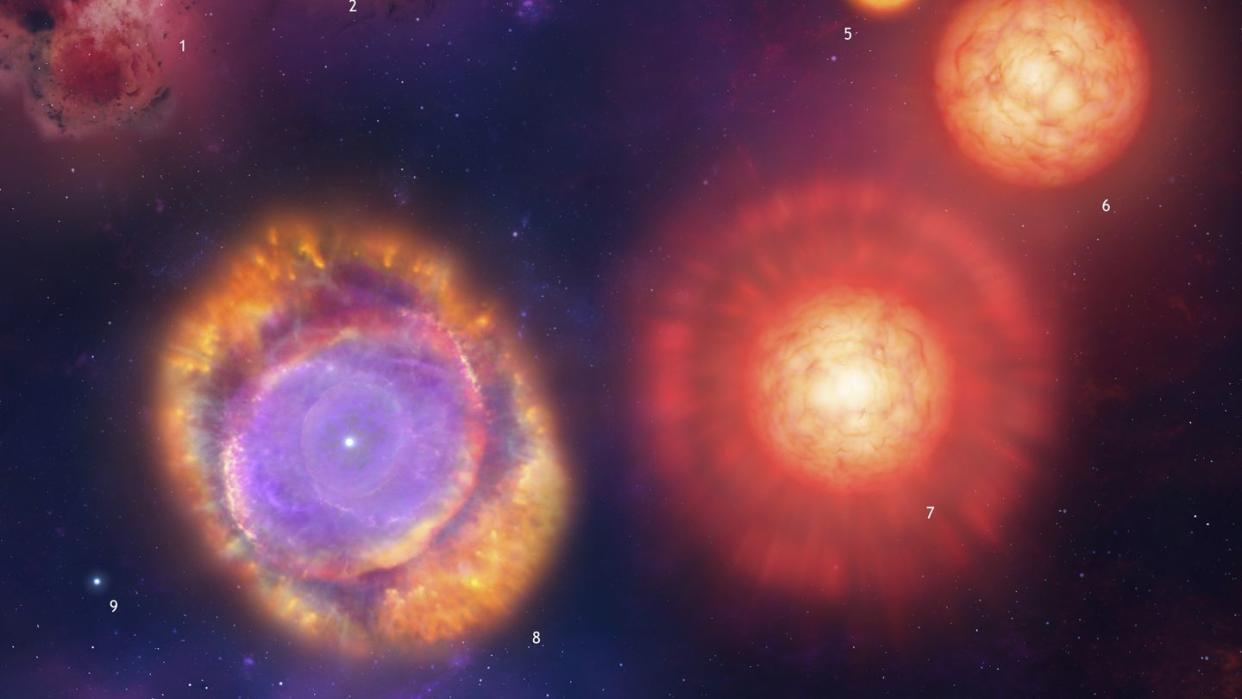The Sun’s Expansion Will Devour Many of Its Children, Says Fun Study

By all accounts, Earth won’t survive the Sun’s expansion into a Red Giant. But if it somehow does manage to survive the experience, things still won’t look great once the Sun’s fuel eventual runs out.
A new study analyzed three white dwarf stars with evidence of transits by planetary debris, and if the Earth makes it to this phase of the Sun’s life, then it’ll likely be ripped to shreds.
The study also confirmed that bodies in the asteroid belt, as well as moons of Jupiter, would likely meet a similar fate.
For the past 4.6 billion years, our Sun has been happily fusion hydrogen into helium (with the help of quantum tunneling) to provide a steady source of heat that eventually made its third orbital rock habitable. Sadly, the Sun won’t always be this stable, and in roughly 5 billion years, it’ll use up all its available hydrogen and instead begins fusing helium into carbon. The Sun’s radius will swell and ultimately swallow the inner planets.
Scientists have long considered this fiery death to be the Earth’s ultimate end, but there’s a non-zero chance that the Earth could actually survive the Sun’s Red Giant phase (albeit with no atmosphere or oceans to speak of). However, even if the planet did stick around to see the Sun finally transition to a white dwarf, things would look still look rough for our home world.
After closely studying three different white dwarfs—each known to exhibit transits (passage in front of a star that alters its brightness) of planetary debris—a new study from the Royal Astronomical Society suggests that Earth, along with other bodies in the Solar System including Jovian moons (moons of Jupiter), would likely be torn to shreds. The results of the study were published in the journal Monthly Notices of the Royal Astronomical Society.
“Whether or not the Earth can just move out fast enough before the Sun can catch up and burn it is not clear, but [if it does] the Earth would [still] lose its atmosphere and ocean and not be a very nice place to live,” University of Warwick’s Boris Gaensicke, a co-author of the study, said in a press statement. “We know lots of white dwarfs in the galaxy. They may have had planets in the past and many of them still have planetary systems today. What would happen in those systems?”
To answer this question, Gaensicke and his team analyzed three white dwarfs (each with a name filled with a jumble of letters and numbers that only astrophysicists can love): ZTF J0328−1219, ZTF J0923+4236, and WD 1145+017. Each of these white dwarfs exhibit an array of behaviors. The first one, for example, is considered “well-behaved,” meaning its remained steady over the last few years following a catastrophic event in 2010. Whereas the second dwarf, the researchers claim, “dim[s] irregularly every couple of months, and shows chaotic variability.”
“The unpredictable nature of these transits can drive astronomers crazy—one minute they are there, the next they are gone. And this points to the chaotic environment they are in,” Gaensicke said.
While analyzing the changes in brightness of these white dwarfs due to planetary transits from the past 17 years, Gaensicke’s team gained insight on what our white dwarf Solar System might someday look like. While Earth would be (likely) obliterated by the Sun’s Red Giant phase, Mars—as well as the outer giant planets—would survive, along with asteroids and other small celestial bodies.
Some giant planets, especially Jupiter, would likely dislodge their own moons and send them toward the white dwarf where, eventually, they’d be ripped to pieces—along with asteroids residing between Mars and Jupiter. So, while Earth has a chance of surviving the Sun’s explosive helium-fusing phase, life under the eerie glow of white dwarf wouldn’t exactly be a paradise.
You Might Also Like
